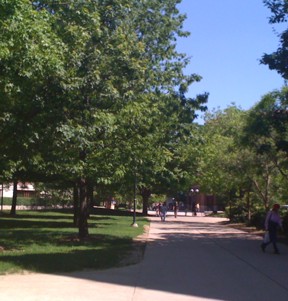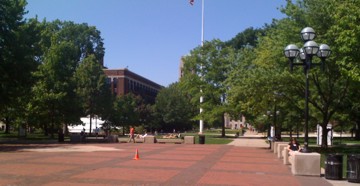
We are looking at the recent book by Elaine Howard Ecklund Science vs Religion: What Scientists Really Think. The earlier installments are here: first, second, and third. The book relates various ideas about science and religion that emerged from her interviews with 275 scientists in seven departments (Chemistry, Physics, Biology, Psychology, Sociology, Economics, and Political Science) at 21 “elite” universities (Columbia, Cornell, Duke, Harvard, Johns Hopkins, MIT, Princeton, Stanford, U Penn, UC Berkeley, UCLA, Chicago, UIUC, Michigan, Minnesota, UNC, U Washington, Wisconsin, USC, Washington University St. Louis, and Yale).
This book is worth serious consideration by both Christian and non-Christian scholars. It will provide invaluable insights for any one involved in campus ministry or a church near a university campus.
In chapters 6 – 7 Ecklund considers what these scientists thought about how religion is or should be dealt with in the University. Of the 275 scientists interviewed, 191 were asked “What place should religion occupy in a university like yours?” Of these 191, ~42% mentioned some kind of positive role, ~36% saw no positive role for religious people, institutions, or ideas in the university, the remainder are mixed. Approximately 54% mentioned the dangers that religion can have for science. Ecklund discusses three models or reasons for eliminating religion from the University and three models or reasons for including religion in the University distilled from the comments of these 191 professors across disciplines.
What place is there for religion within the University? Is there a place for God on the Quad or should we have no God on the Quad?

The Model of Opposition: Religion ought to be viewed in opposition to scientific reasoning. Some of the scientists interviewed view the purpose of the university as “inherently focused on reason and rationality, and little else.” (p. 93) Religion should not be at the university as anything other than a subject for dissection. Because there is no truth in religion that is not also found apart from religion – religious “knowing” or thought simply does not belong. The only real questions are secular questions.
The Model of Secularism: Universities ought to be bastions of secularism. “Scientists who talk extensively about separation of church and state argue that there are enough places in the broader society where religion has taken hold and that universities should be places where knowledge is protected from its grip” (p. 97)
The Model of Pluralism: Universities ought to foster pluralism. There is a serious danger from bringing religion into the university because religion is inherently partisan and will privilege one group over another. Proselytizing has no place in the university. Some wonder if one can even hold an exclusive view and be a true scholar.
The Model of Nurture: Universities ought to nurture students – including spiritually – in their formative years. In general this is not considered part of the intellectual mission of the university, rather the university should provide resource for the development of the whole person, providing athletic facilities, social opportunities, and, for those who wish, the opportunity for spiritual nurture. This is supporting student choice and diversity, not establishing any belief as preferred.
The Model of Legitimacy: Universities ought to extend legitimacy to religion as a subject of study. This is a two-edged sword. While religion should be acknowledged as a subject for study and for the impact it has on some subjects, not just for dissection but from a variety of perspectives, it is separated and bounded and kept away from the other disciplines.
The Model of Connected Knowledge: Universities ought to support the connection of religious knowledge to other forms of knowledge. Ecklund comments on Marsden’s call for “Christian scholars to take bold initiative in connecting their beliefs to their specific disciplines while at the same time playing by the rules of their particular guilds.” In a lecture at an InterVarsity Graduate conference in 1999 NT Wright
made much the same call – for connection of faith with academic
discipline (Jesus and the
World’s True Light (9.8MB MP3)). This is harder than it sounds. In Ecklund’s interviews social scientists struggled to see a way to connect faith with disciplines, natural scientists saw it as nearly impossible. No one saw faith as having any influence on the scientific method of their discipline.
What do you see as ways that religion can or should have a place within the university? What is the connection between religion, intellectual diversity, and scholarship?
If you wish to contact me you may do so at rjs4mail[at]att.net

